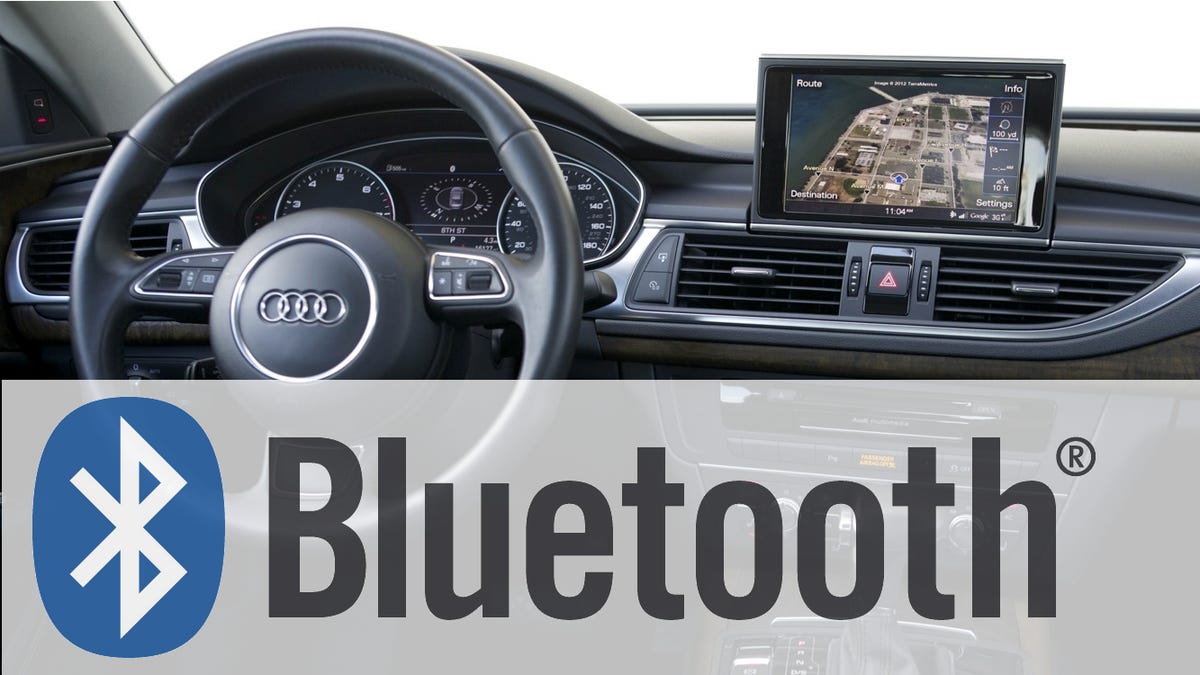Six reasons why Bluetooth is your one-stop for car connectivity
For many, Bluetooth is merely a safer way to make calls while driving, but there are many more reasons to wirelessly connect your phone with your car.

I shouldn't really have to sell you on Bluetooth at this point. Bluetooth has already established itself as the de facto wireless connectivity standard for phones, cars, and a plethora of accessories. However, many users view Bluetooth as just the thing that lets you make calls in your car, the blinking blue light that lets you know the guy talking to himself on the sidewalk isn't crazy, yet another thing to distract you, or (for a surprising number of users) something to be completely ignored. So, I've presented below six reasons why Bluetooth in the car merits a second look.
1. Telephony (HFP)
The Hands-Free Profile (HFP) that enables speakerphone calling is the part of Bluetooth that most of you are already familiar with. After a brief pairing process, your car stereo's speakers and a microphone hidden somewhere in the cabin take over the output and input of audio during calls while driving. Almost all hands-free systems include some sort of caller ID system, but the best take advantage of HFP's sister profile, the Phone Book Access Profile (PBAP), to sync with the contacts stored on your phone to display (and sometimes speak) the names of callers, browse an address book of known contacts, and gain access to logs of recently missed, received, and dialed calls.
2. Audio streaming (A2DP)
Only recently gaining widespread adoption, the Advanced Audio Distribution Profile (A2DP) allows the connected car audio system to receive stereo audio from a connected Bluetooth phone. So the same wireless connection that was used to carry voice data for the hands-free call can now be used to listen to music stored on your phone, stream from an Internet radio service such as Pandora or Spotify, or listen to podcasts or audiobooks.
A2DP goes hand-in-hand with the Audio/Video Remote Control Profile (AVRCP), which enables the receiver to receive metadata from the connected phone and to actually control the playback. Metadata displayed usually includes artist, song, and album name, but occasionally I've seen album artwork displayed. Audio controls manifest as simple play/pause and skip commands.
3. Text messaging (MAP)
This is probably the most recent Bluetooth standard to gain widespread adoption in the automotive sphere. The Message Access Profile (MAP) gives a Bluetooth-connected receiver -- in this case, your car -- bidirectional access to SMS messages on your phone. Incoming messages can be read aloud while you drive, relieving the temptation to reach for your phone every time the notification sounds for fear of missing an important message. Additionally, many newer car stereos that support MAP will also allow the user to fire off a quick canned response, such as "I'm busy driving right now, call you back shortly" or "I'm stuck in traffic," with just a tap or two.
4. Data tethering and apps
Many Bluetooth-enabled phones are capable of what is called data tethering, which allows the handset to share its Internet connection with a connected device. While this is good in a pinch for answering e-mails with a laptop, the connection is really too slow for image-heavy Web browsing.
However, car stereos, such as the Parrot Asteroid, or OEM infotainment systems, such as Toyota Entune, require very little data to do their thing, making them prime candidates for taking advantage of Bluetooth tethering. So, you won't have to rely on a satellite radio subscription for traffic data that can be pulled from the Web or an outdated database of locally stored POIs when fresh destinations can be searched for online via Bing or Google.
Some in-car infotainment systems can use Bluetooth to take control of the apps that are already on your smartphone. This opens up all kinds of possibilities, from using voice command to select radio stations from the Pandora Internet radio app with Ford Sync AppLink to making a reservation at your favorite restaurant in the OpenTable app via Toyota Entune.
In this way, Bluetooth can be used to connect the apps you already love to an interface that's safe to use in the car.
5. Universal support
You'll be hard-pressed to find a phone on the market that doesn't support Bluetooth connectivity for HFP, A2DP, and MAP. That goes for Apple and Android, smartphones and dumbphones feature phones, the newest uberphone and your dad's flip phone. Likewise, nearly every car on the market offers Bluetooth connectivity as either a standard feature or an inexpensive option.
6. It's getting better
A few years ago, the most you could do with your average Bluetooth phone was make hands-free calls and beam photos and ringtones to your friends. Now your average handset can do all of the things discussed above without a physical connection. Bluetooth is an evolving standard and it's getting better.
For example, simple pairing via NFC will remove the need to mess with menus or input PINs when initially connecting your phone to your car, making the pairing process as simple as placing the phone on a pad on the dashboard or dropping it into your cup holder.
Right now, the most widespread version of AVRCP (1.3), which only lets you view metadata for the currently playing song and skip forward and back, isn't even the most recent version. The newest AVRCP Bluetooth standard (1.4) adds the ability to browse and search all of the media on the connected device.
Next time...
So, there are six of the many reasons why Bluetooth is great for in-car use. When we return, I'll be taking a look at a few ways that Bluetooth in the car still falls short. Stay tuned.

